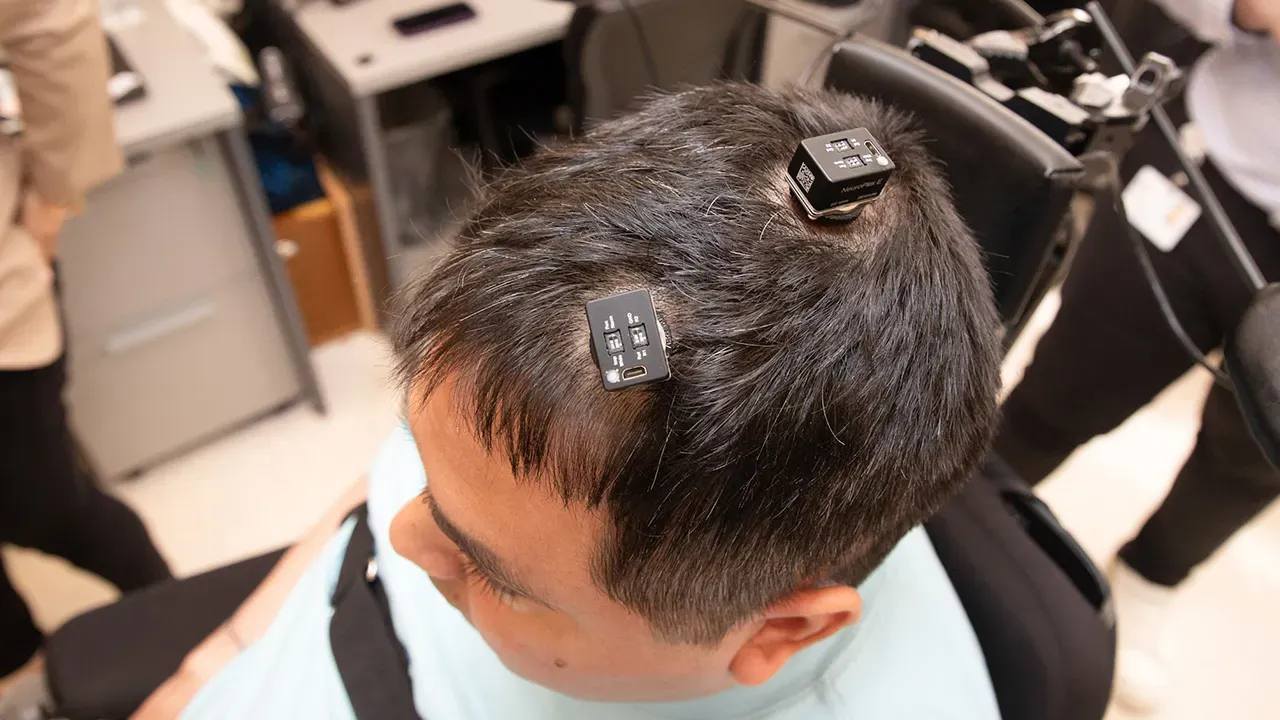A breakthrough brain implant is bringing science fiction closer to reality. Researchers across the US have created a system that can translate inner speech into words, reaching up to 74 percent accuracy in early tests. For people living with severe paralysis, this could one day mean a faster, more natural way to communicate without moving a muscle.
Brain Implant Can Decode Inner Thoughts Into Speech in early trials

Unlike earlier brain computer interfaces that required patients to attempt speaking or writing, this system works directly with inner speech. Four volunteers with paralysis tested the implant, which listens to neural signals in the motor cortex and uses machine learning to decode them. Instead of relying on muscle signals, the implant maps the brain’s activity when a person simply thinks of words or phrases.
How the brain implant turns thoughts into words
The system identifies phonemes, the small units of speech that build words. By training on repeated patterns, it can recognize how thoughts translate into sounds and combine them into sentences. In trials, the decoder was able to process up to 125,000 words by analyzing imagined speech and applying probability rules about which phonemes usually fit together.
- It tracks neural activity in the motor cortex
- Machine learning maps signals to phonemes
- Phonemes are combined into words and sentences
- The system can draw from a vocabulary of 125,000 words
This approach brings it closer to a practical communication tool for people who cannot speak, offering a potential bridge between thought and voice.
Limits and safeguards still needed
The 74 percent accuracy is a best case scenario, not the average. Much of the time the decoder missed the mark, and more work is needed to improve personalization and reliability. Researchers believe that refining implant hardware and mapping more brain regions will boost accuracy in the coming years.
There is another challenge, privacy. Inner monologues are not always meant to be shared. To avoid accidental decoding, the team tested a safeguard that requires a mental password to activate speech decoding. This worked with 98 percent accuracy, showing it is possible to keep thought translation under control.
Why this matters for the future of BCIs
Speech BCIs have long focused on restoring communication by decoding attempts at speaking. By showing that inner speech itself can be decoded, this research widens the scope for what implants might achieve. It hints at a future where conversations could flow as smoothly as natural dialogue for those locked out of speech today.
For now, the implant remains a proof of principle. But the speed of progress is undeniable. Each experiment sharpens the tools, adds words to the system, and makes the impossible feel closer to real. The day may come when thinking is enough to be heard.














